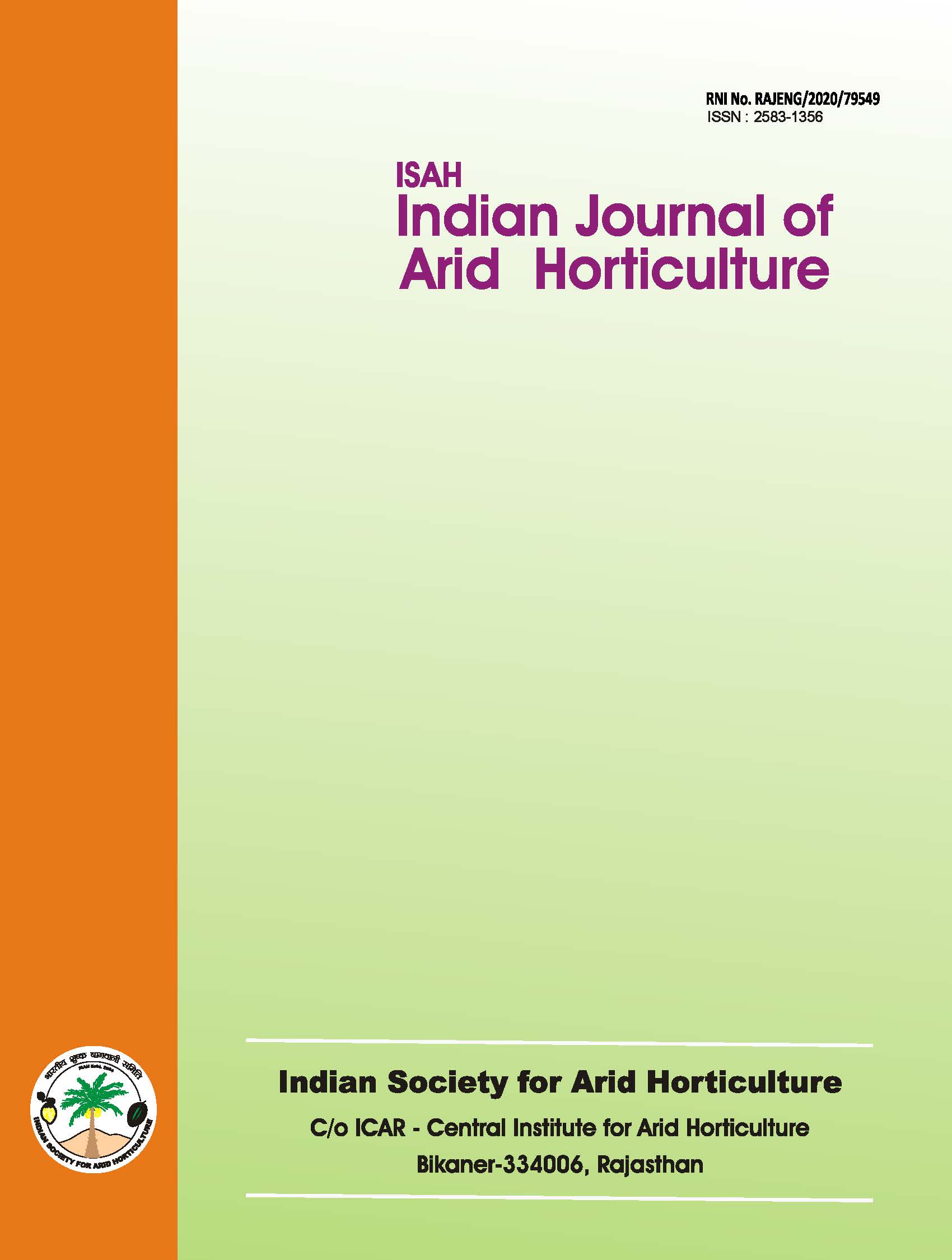Formulation and acceptability studies of rough lemon (Citrus jambhiri Lush.) squash.
Abstract
Rough lemon fruits are highly acidic and possess greater nutraceutical value. Studies were conducted to formulate and assess the acceptability of squash from rough lemon. The varying juice concentrations (50%, 40%, 30%, 20%, and 10%) were used for preparing the squash and stored at ambient temperature (28 ± 3°C). Periodic observations were recorded at fresh (0), 3, and 6-month intervals. Squash prepared with 40% juice was found to be the best recipe with respect to organoleptic qualities, such as color, flavor, taste, and overall acceptability, even after 180 days of storage under ambient conditions.Downloads
References
Amerine, M.A., Pangborn, R.M., & Roessler, E.B. (2013). Principles of Sensory Evaluation of Food. Elsevier.
Attri, B.L., Lal, B.B., & Joshi, V.K. (1998). Physico-chemical characteristics, sensory quality, and storage behavior of sand peat juice blended with temperate fruit juices/pulps. Indian Food Pack, 52, 382-381.
Bhuyan, H., Das, D., & Bhagabali, K.N. (1997). Physico-chemical constituents of rough lemon (Citrus jambhiri Lush) fruits. In Prospects of Medicinal Plants (Eds. P.L. Gautham, R. Rina, U. Srivastava, S.P. Raychaudhuri, & B.K. Singh). Indian Society of Plant Genetic Resources, New Delhi, 208-214.
Hatamipour, M.S., Majidi, S.M., Abdi, M., & Farbodnia. (2004). Potentials for industrial utilization of citrus byproducts. CHISA 2004. Proceedings of the 16th International Congress for Chemical and Process Engineering, August 22-26, 2004, Prague, Czech Republic, pp. 9263.
Lad, P.K., Rockar, P.P., & Pujari, K.H. (2013). Quality evaluation and storage behavior of lime (Citrus limonum) squash cv. SAJ SARBAT. Asian Journal of Horticulture, 8(1), 350-353.
Ladaniya, M.S. (2008). Nutritive and medicinal value of citrus fruits. Citrus Fruit Biology, Technology and Evaluation, 501-512.
Rangamma, S. (1986). Handbook of Analysis and Quality Control for Fruit and Vegetable Products. Tata McGraw-Hill Education.
Singh, V.K., Kumar, R., Yadvika, Hazarika, M.K., & Gogoi, G. (2015). Formulation and acceptability studies of squash prepared from indigenous Assam lemon. IOSR Journal of Environmental Science, Toxicology and Food Technology, 9(10), 62-65.
Syed, H.M., Ghale, C.J.P., Machchwad, G., & Pawar, S. (2012). Studies on preparation of squash from sweet orange. Open Access Scientific Reports, 1(6), 185-187.
Widmer, W.W., & Montanari, A.M. (1994). Citrus waste streams as a source for phytochemicals. Proceedings of the Florida State Horticultural Society, 284-288.

